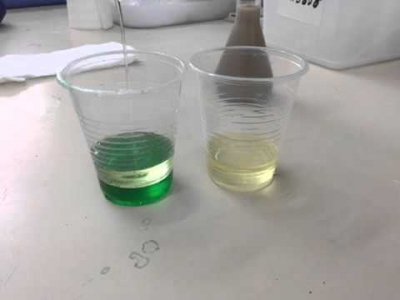
What you need:
Two sheets of paper, Two glasses, Water, Liquid dish soap
What to do:
1. Fill both glasses with water. In one of the glasses, add about 30 ml of dish soap. Gently stir it.
2. Now, wad both the papers into balls that can fit into your glasses.
3. Gently, drop one ball into each glass.
What happens:
The paper ball floats near the top of the glass containing plain water. But it sinks deeper into the glass containing the soapy solution.
Why?
The answer lies in surface tension. Surface tension is the force that keeps the molecules of a liquid bound to each other at the surface of the liquid. This makes the top of a liquid act like an elastic sheet, one you need to push through if you want to go deeper into it. Try dipping your finger into water and you’ll understand.
Soap is a surfactant. A surfactant is a substance which can reduce the surface tension of a liquid. By that it means, that it can loosen the bond between the molecules at the surface of the liquid. That’s exactly what the soap does. So, now that the surface tension of the water is lowered, the paper cannot sit atop it and sinks deeper. Weakened bonds between the water molecules also means that they are able to soak into the paper more freely causing it to become heavier and sink.
Picture Credit : Google




